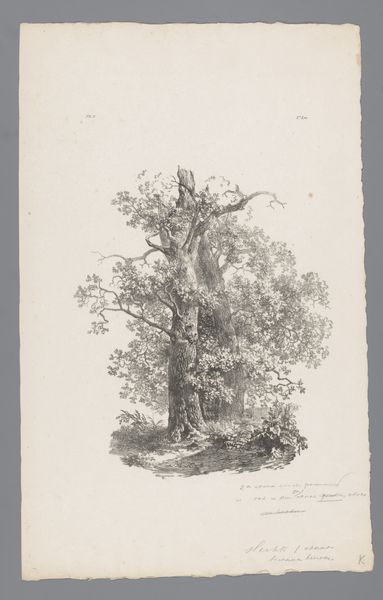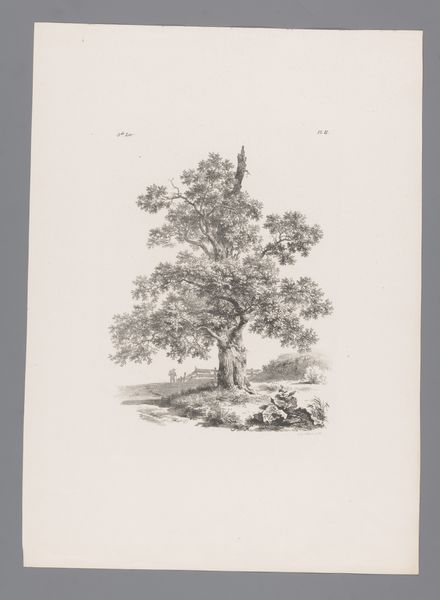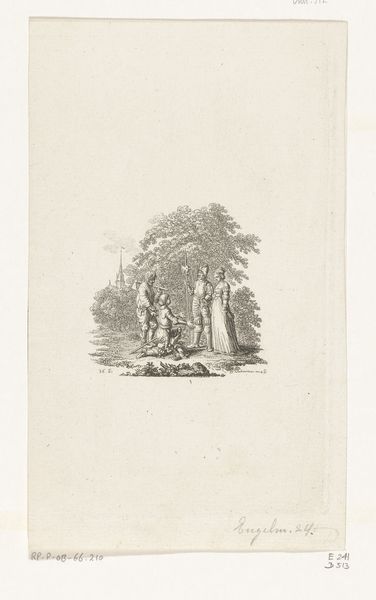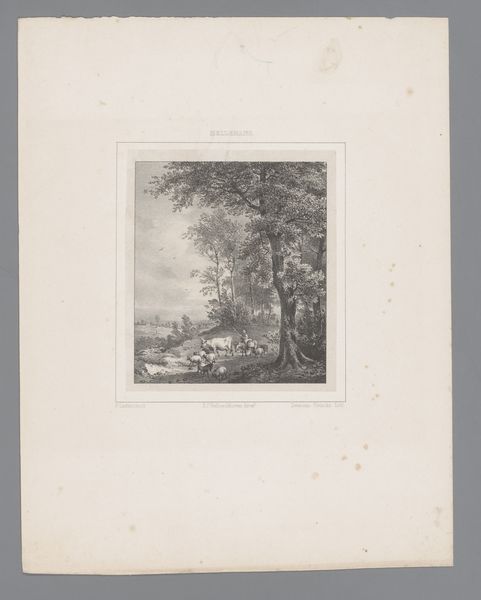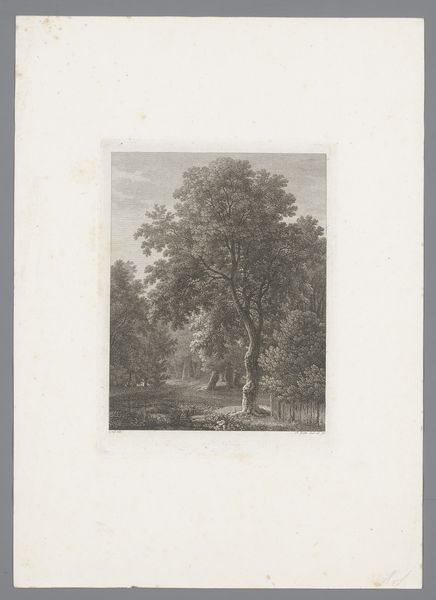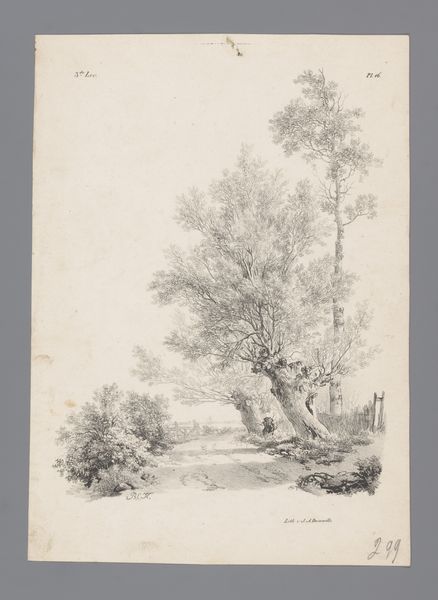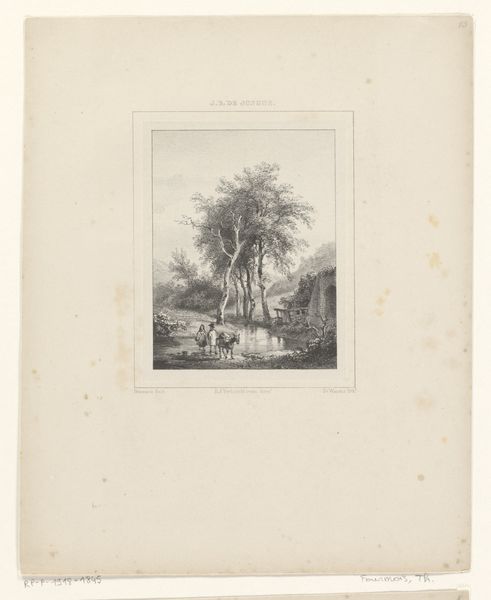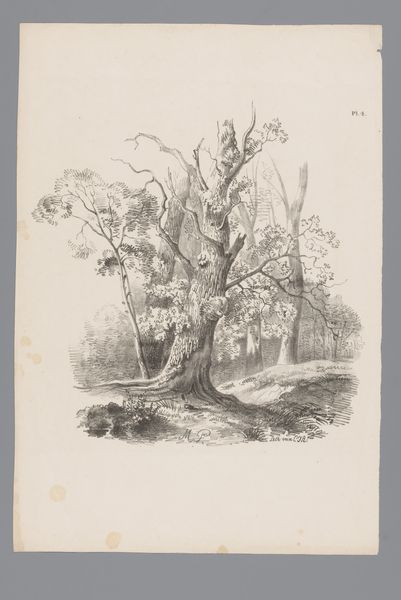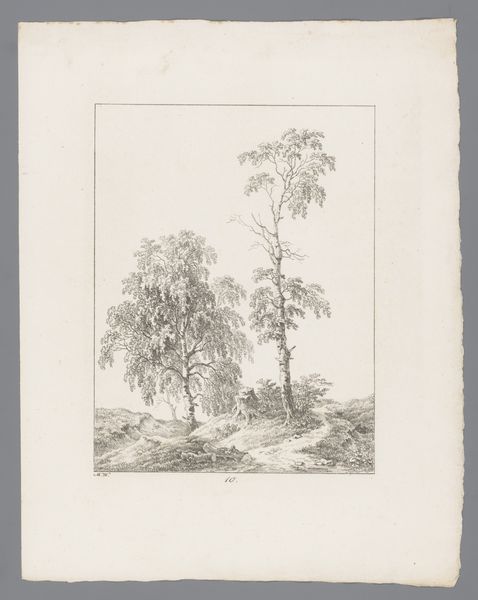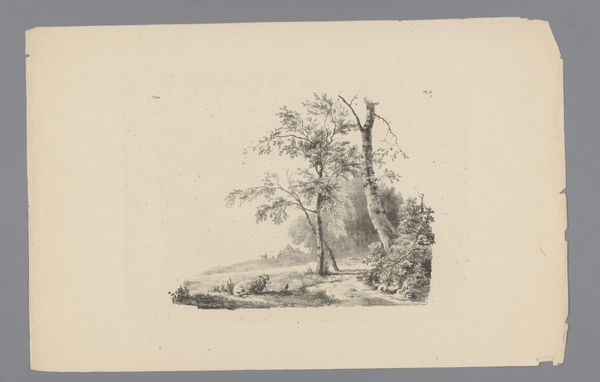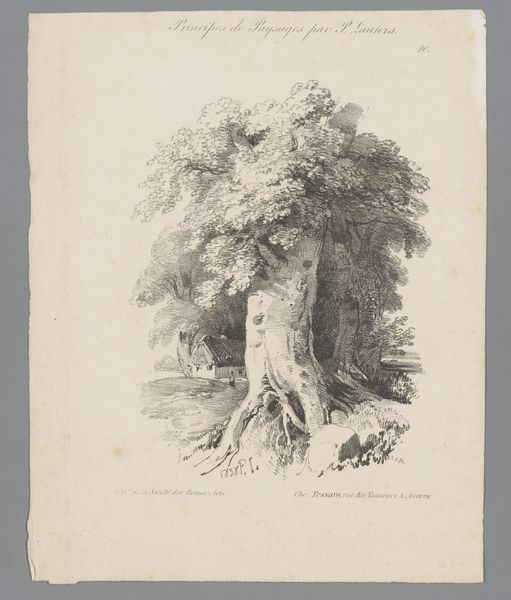
drawing, pencil
#
drawing
#
landscape
#
romanticism
#
pencil
#
realism
Dimensions: height 480 mm, width 340 mm
Copyright: Rijks Museum: Open Domain
Curator: This is "Two Trees and a Fence," a pencil drawing rendered by Barend Cornelis Koekkoek, sometime between 1844 and 1845. It's currently held at the Rijksmuseum. Editor: It's quite lovely. A seemingly simple sketch, but there’s a sense of silent observation. A melancholic intimacy. Curator: Melancholic is apt, I think. Koekkoek was deeply interested in the symbolic weight of trees, seeing them as embodiments of strength and endurance but also of the passage of time, their rings chronicling history. Editor: Precisely! Look how he emphasizes the gnarled texture of the bark. See how the lines aren't just descriptive; they suggest age, resilience…a visual palimpsest if you will. The darker lines act as signifiers of deep time and experience. Curator: He was very influenced by Romanticism, which often saw nature as a mirror reflecting human emotion, with themes of spirituality and an appreciation for the sublime. The positioning of the fence, it's a humble attempt to confine something infinitely more potent, perhaps reflective of the dawning awareness of the changes modernity brought. Editor: That fence…it serves as a grounding horizontal against the trees' verticality. A clear visual counterpoint emphasizing both control and the limitations of control. It introduces structure, human presence…a semiotic insertion disrupting pure, unadulterated nature. Curator: I agree. He expertly used pencil to create tonal gradations, achieving a very realistic texture. Consider how he conveys the rustling leaves…how sunlight filters through. Editor: And yet, realism tempered by an artistic vision. A landscape not simply reproduced, but reimagined. He masterfully captures the balance between the empirical observation and artistic expression. The composition pulls the eye in. It is both delicate and evocative. Curator: The scale is deceptively small. A visitor often pauses because the emotional scale feels huge, resonating far beyond its dimensions. Editor: Absolutely. The simplicity becomes its power. We are invited into a moment of tranquil reflection. Curator: It’s this paradox of grandeur and quietude which endows the piece with lasting appeal. It truly offers an intimate space to ruminate upon these archetypal symbols. Editor: Agreed. This unassuming little drawing leaves a large, echoing trace in our collective cultural psyche.
Comments
No comments
Be the first to comment and join the conversation on the ultimate creative platform.
